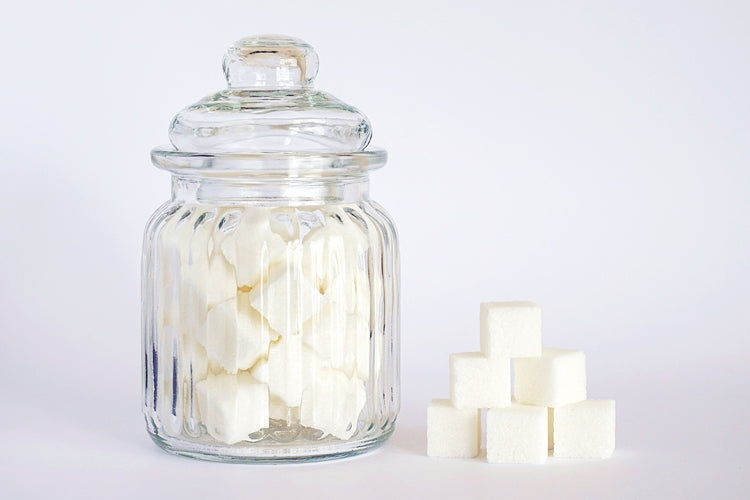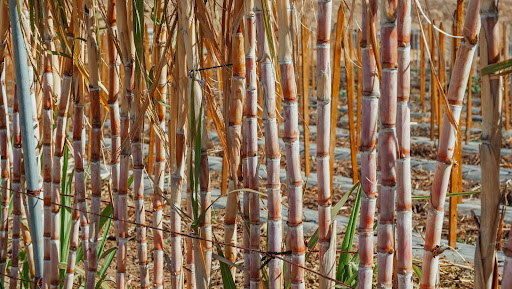Beet Sugar Vs Walking Stick: Discover the most effective Selection for Your Sweetening Requirements
The choice between beetroot sugar and walking stick sugar expands beyond simple sweetness; it includes factors such as flavor accounts, production methods, and dietary advantages. While both sugars offer similar functions in cooking applications, their distinctive attributes can substantially affect your option based upon particular demands. As an example, the earthy touches of beetroot sugar might not enhance every recipe, whereas cane sugar is commonly preferred for its clean taste. As we check out these nuances, it ends up being important to think about which choice aligns ideal with your culinary objectives and health and wellness choices. What might surprise you are the implications of each choice on your overall cooking experience.
Summary of Beetroot Sugar
Beet sugar, generally acquired from the sugar beet plant, is often made use of as a crucial artificial sweetener in different foodstuff. The sugar beet, a biennial plant, thrives in warm environments and is primarily grown in regions such as Europe and North America. beet sugar vs cane. The extraction procedure entails cutting the beets and extracting the juice, which is after that purified and crystallized to generate granulated sugar
One significant quality of beet sugar is its chemical composition, which is virtually similar to that of cane sugar, as both are composed mainly of sucrose. This similarity enables beet sugar to be used mutually with walking stick sugar in recipes and food manufacturing.
Beetroot sugar is additionally kept in mind for its convenience in different applications, including baking, drink formula, and confectionery manufacturing. In addition, the beetroot sugar market has actually made strides in sustainable practices, with lots of producers implementing ecologically friendly farming techniques.

Summary of Walking Cane Sugar
Cane sugar, acquired from the sugarcane plant, is just one of one of the most commonly identified and used sugar globally. It is largely made up of sucrose, a disaccharide that offers a pleasant flavor profile important for numerous culinary applications. Walking cane sugar is generally located in granulated type but is likewise readily available as raw sugar, brownish sugar, and powdered sugar, each offering distinctive purposes in cooking and baking.
The growing of sugarcane is prominent in tropical and subtropical areas, adding to its prevalent availability. The plant thrives in cozy climates, needing adequate sunlight and water for optimal growth. Walking stick sugar is often valued for its natural production approach and marginal processing, which preserves its flavor and dietary residential or commercial properties.
Along with its cooking uses, walking stick sugar plays a substantial role in the food industry, serving as a preservative, fermentation substrate, and texturizing agent. Its versatility extends past food, discovering applications in drinks, confections, and even cosmetics. With a long background and a solid social existence, walking stick sugar proceeds to be a recommended option for consumers looking for a natural sweetening choice.
Production Procedures Compared
When contrasting the production procedures of beet sugar and walking stick sugar, it becomes clear that each approach shows the special qualities of its source material. Beetroot sugar production starts with harvesting sugar beets, which are then cleaned, sliced, and subjected to hot water extraction to dissolve the sugar.
In contrast, walking cane sugar manufacturing involves harvesting sugarcane stalks, which are crushed to draw out juice. This juice is after that clarified making use of warm and lime, similar to the beet process. After information, the walking cane juice is vaporized and crystallized. Nevertheless, the cane sugar process integrates a longer milling and pressing phase, which aids in drawing out maximum juice from the stalks.
Both processes stress effectiveness, however the methods highlight distinctions in tools and energy usage. Beet sugar tends to have an extra straightforward processing path, while cane sugar production can be extra complicated due to the fibrous nature of the walking stick stalks. Eventually, these distinctions shape the features of the sugars produced.
Nutritional Profiles and Advantages
Sugar, a staple in several diet plans, varies in dietary accounts and advantages relying on its resource. Both beetroot sugar and cane sugar mainly include sucrose, giving comparable calorie content-- about 4 calories per gram. Refined differences can impact consumer choices and perceptions.
Beetroot sugar is acquired from sugar beets, moved here which have percentages of minerals and vitamins, such as potassium and calcium, but these nutrients exist in minimal quantities when consumed in normal quantities. Conversely, walking stick sugar, drawn out from sugarcane, might provide comparable trace nutrients, yet the differences are mostly unimportant and very little in the context of a well balanced diet.
One notable aspect is the ecological impact of each source, which can indirectly impact nutritional choices. Beet sugar manufacturing is commonly seen as more sustainable as a result of lower water usage compared to walking stick sugar farming. Additionally, some people favor beetroot sugar due to its non-GMO status in certain regions, possibly straightening with health-conscious consumer trends.

Taste Differences and Makes Use Of
Distinct taste profiles define beet sugar and walking stick sugar, influencing their applications in numerous culinary contexts. Beet sugar has a somewhat natural preference, image source which can be credited to the soil in which the beetroots are grown. beet sugar vs cane. This refined taste may not be noticeable in a lot of recipes, yet it can influence the overall preference in delicate recipes, such as meringues and specific icings. On the other hand, cane sugar uses a cleaner, much more simple sweet taste that is often preferred for baking and treats, as it boosts flavors without eclipsing them.
In useful terms, beetroot sugar and cane sugar can generally be made use of interchangeably in a lot of recipes. Nevertheless, bread cooks and culinary specialists commonly lean towards walking cane sugar for its exceptional ability to caramelize, which is necessary in developing complicated flavor profiles in confections and sauces. Additionally, walking stick sugar is preferred in drinks, as its taste dissolves perfectly, preserving the honesty of the drink.
Eventually, the selection between beet and cane sugar might come down to personal choice and the specific demands of the dish, with each kind offering one-of-a-kind characteristics that can improve the cooking experience.
Final Thought
In recap, the choice between beet sugar and walking cane sugar depends upon details culinary applications and personal health considerations. While beetroot sugar presents a somewhat natural flavor and sustainable production benefits, check my blog cane sugar's cleaner sweetness is usually favored in baking and delicate recipes. Evaluating the production procedures, dietary accounts, and flavor differences can direct consumers in picking one of the most ideal sweetener for their needs, making sure both taste complete satisfaction and alignment with nutritional choices.
Beet sugar, typically derived from the sugar beet plant, is often used as a crucial sweetening agent in various food products. Cane sugar is typically found in granulated form however is likewise offered as raw sugar, brownish sugar, and powdered sugar, each offering unique functions in food preparation and cooking.
When contrasting the production procedures of beet sugar and walking cane sugar, it becomes clear that each approach mirrors the one-of-a-kind features of its resource material. Beet sugar manufacturing starts with gathering sugar beets, which are after that washed, cut, and subjected to hot water extraction to liquify the sugar. Beetroot sugar tends to have a more simple processing route, while walking stick sugar production can be a lot more intricate due to the fibrous nature of the cane stalks.